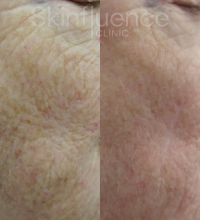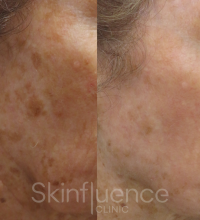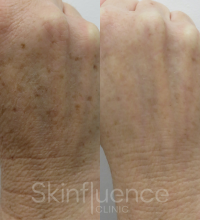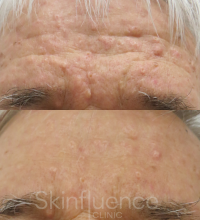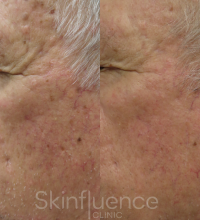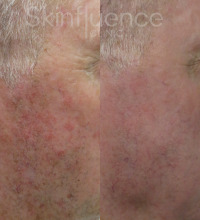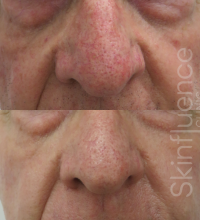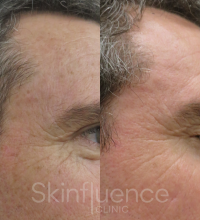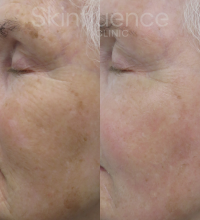What does sun damage look like?
Initial sun damage looks like sun burn however this will on average only last 1-2 days following excessive UV exposure. Continual sun burns and UV exposure over the course of a persons year will create long-term changes to the skin.
Dry skin may also become more apparent following UV exposure as the sun’s heat dries out the unprotected skin and depletes the skin’s natural oils.
What are the types of sun damage?
Freckles appear as flat brown spots in areas of high UV exposed areas. Freckles form as a result of melanin overproduction. There are two types of freckles; ephelides and solar lentigos. Ephelides are common in people with a fair complexion however can be found on people with varying Fitzpatrick skin types. They commonly start to appear from childhood and start as small light brown marks on the skin. Solar lentigo again commonly appear in people with fair complexion however different to ephelides start to appear in adults over the age of 40.
Actinic Keratoses are rough, dry, scaly patches of flat or raised skin that can appear on the face, neck, ears, arms or hands. Actinic Keratoses can either be pink, red, brown or the same colour as the surrounding skin.
Changes to the skins collagen can occur from repeated sun exposure. This is also known as photoageing. Photoageing develops as there are deep changes in the dermis creating fine lines and wrinkles.
Skin Cancers can also appear from repeated sun exposure or sun burn. There are three main types of skin cancers; basal cell carcinoma (BCC), squamous cell carcinoma (SCC) and melanoma.
What are the treatment options for sun damage?
Prescriptive
Topical creams can be used to either reverse some early signs of sun damage or to treat superficial pre-malignant and malignant skin lesions. Prescription methods cannot be used to treat all types of sun damage.
Non-prescriptive
Sunscreen should continue to be used even once the signs of sun damage appear. Sunscreen prevent further damage occurring in the years that follow.
Treatment
Physical treatments can be performed in clinic to treat superficial skin lesions. Field treatments are commonly used to treat flat and areas of chronic sun damage. Fraxel is a treatment choice which can be performed in clinic.
What causes the skin to appear sun damaged?
Although the skin needs sun light to synthesise Vitamin D too much sunlight can cause detrimental effects on the skin. Too much sun exposure initially might turn into a tan however more commonly it creates a sun burn. Repeated sun burn means that UV has penetrated the outer layers of the skin and passed into the deeper layers where damage is caused or even cell death. Frequent sun exposure and sun burn over many years heightens the risk of skin cancer.
What are the options for skincare for sun damaged skin?
- Sunscreen should never be neglected even if sun there are signs of sun damage which have appeared. Sunscreen helps to prevent further sun damage from occurring.
- Vitamin A works by increasing cell turnover and collagen production which help recreate healthier skin.
- Vitamin C helps to protect the skin from further damage caused by UV exposure.
- Hyaluronic Acid and Niacinamide help to restore the skins hydration caused from sun exposure which can present as skin dryness.
What are the options for skincare for sun damaged skin?
- Sunscreen should never be neglected even if sun there are signs of sun damage which have appeared. Sunscreen helps to prevent further sun damage from occurring.
- Vitamin A works by increasing cell turnover and collagen production which help recreate healthier skin.
- Vitamin C helps to protect the skin from further damage caused by UV exposure.
- Hyaluronic Acid and Niacinamide help to restore the skins hydration caused from sun exposure which can present as skin dryness.

